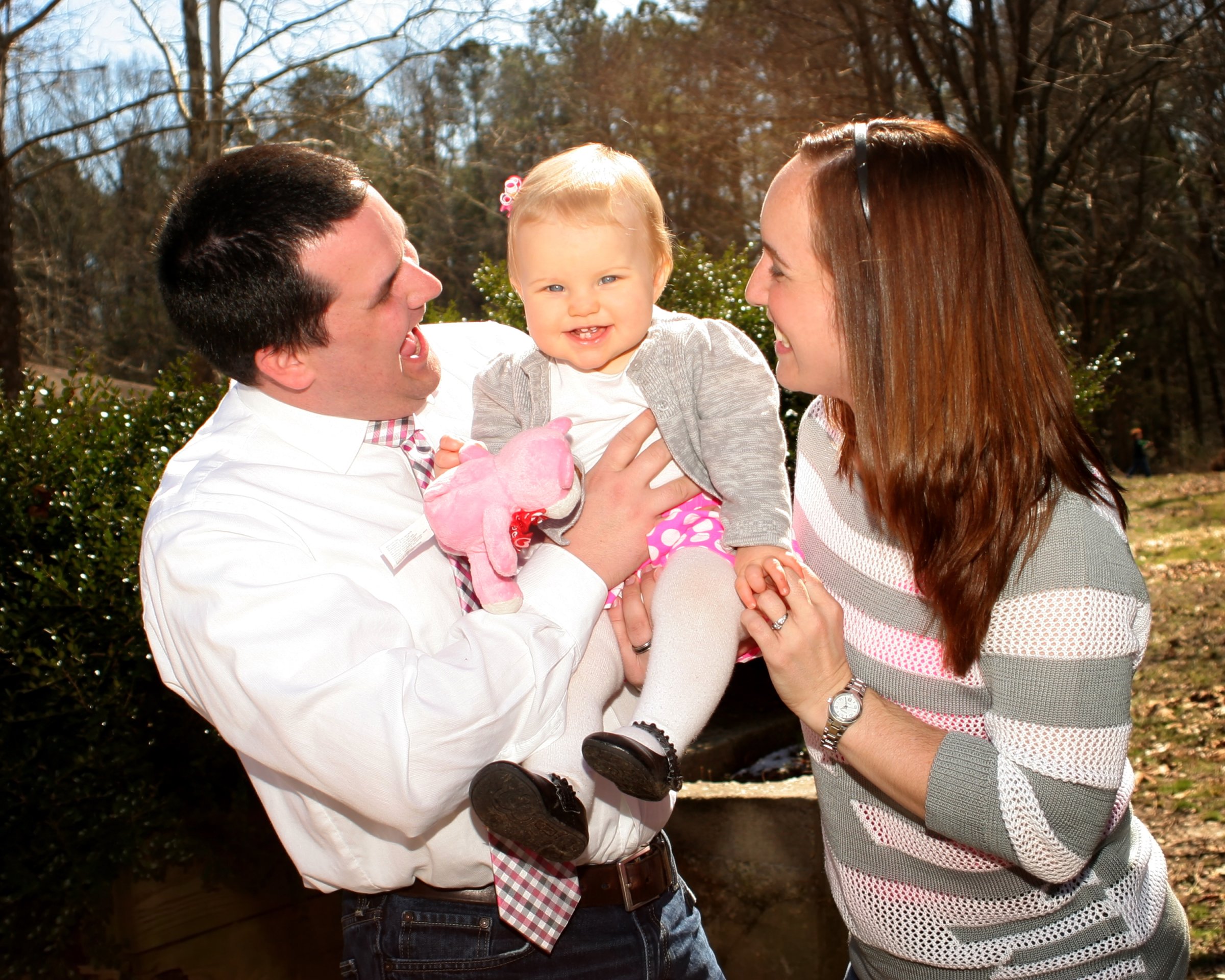
On Monday, April 15, 2013, at 8:00 a.m., my life changed forever. My wife, Kasiah, and I welcomed our first child, a healthy girl named Finley Elizabeth Banks, into this world. She was perfect. But the journey to have a healthy, HIV-free biological child began many years before Finley’s birth.
In 1981, when I was two years old, I was diagnosed with Bilateral Wilms’ tumors, a cancer of the kidneys, which had also spread to both of my lungs. The prognosis was grim; treatment was aggressive. My tiny toddler body fought a battle that required 15 months of chemotherapy, radiation therapy, and surgeries that required multiple blood transfusions.
Unknowingly, I was transfused with blood that infected me with HIV. Ten years later, having lived through a cancer-free childhood, doctors screened my blood during a routine oncology check-up. They discovered that I was HIV-positive.
In 1991, the epidemic was still raging, and very little was known about how HIV/AIDS infected and affected children. Pediatric treatment options were limited — AZT (the drug that drives the plot of Dallas Buyers Club) had only been approved for young patients the previous year.
Support from family and friends gave me the hope and strength I needed to fight every day and continue to plan for my future: graduate from high school and college, get married, and start a family. School required hard work and determination on my part, but starting a family would require unconditional love and support from another person, someone who could look past my HIV-positive diagnosis and see all of me.
That person was my best friend, Kasiah. We married in 2003. She believed in our future together, which included trusting that research would be developed to allow us to have a healthy, HIV-free biological child.
As we began to explore options, Kasiah and I were frustrated at the lack of family-planning data or information out there for serodiscordant couples like us, in which one partner is HIV-positive and the other is negative.
After endless telephone calls and consultations, we opted for sperm-washing and artificial insemination. Sperm washing is a technique commonly used to screen for genetic disorders, but the process is especially important for mixed-status couples who choose to have biological children. Doctors separate sperm from infected fluid, producing a virus-free sample (as with anything in medicine, the process does not 100% guarantee no transmission, and it is illegal in some states, but studies have shown its vast success).
After the sperm was washed, two samples were tested for HIV and both results were negative. This step was critical because we wanted to reduce the chances of horizontal (to the woman) or vertical (to the child) transmission of HIV as much as possible. And as mentors to younger HIV-positive children, adolescents, and young adults, we wanted to give the message of prevention.
Despite the now-wide research and documentation of prevention of mother-to-child transmission of HIV (PMTCT), there is still little dialogue around a father’s role in PMTCT. By not considering an HIV-positive male in terms of reproduction, a large portion of the HIV population is being ignored. We share our story and our daughter’s story to let other HIV-positive men know that the possibility of having a healthy, HIV-free family is very much a reality.
In the year we have loved Finley, we know what it means to be truly unselfish. Our hearts melt when we hear the words, “Ma-ma!” or “Da-da!” And we would not trade the sleepless nights, early wake-up calls, or dirty diapers for anything in the world.
Ben Banks is an HIV-positive Ambassador for the Elizabeth Glaser Pediatric AIDS Foundation, which celebrate its 25th anniversary this week. He lives in Virginia with his family.
More Must-Reads from TIME
- Cybersecurity Experts Are Sounding the Alarm on DOGE
- Meet the 2025 Women of the Year
- The Harsh Truth About Disability Inclusion
- Why Do More Young Adults Have Cancer?
- Colman Domingo Leads With Radical Love
- How to Get Better at Doing Things Alone
- Michelle Zauner Stares Down the Darkness
Contact us at letters@time.com